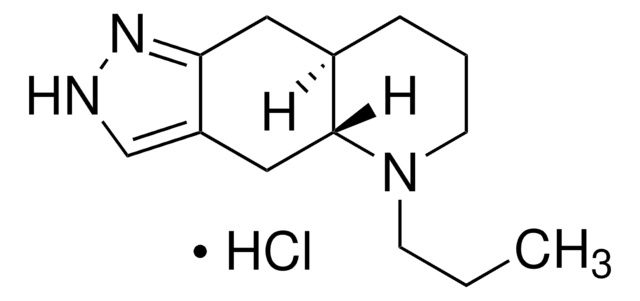S3256
Spermine
≥97%
Synonym(s):
N,N′-Bis(3-aminopropyl)-1,4-diaminobutane, Gerontine, Musculamine, Neuridine
About This Item
Recommended Products
biological source
microbial
synthetic
description
form: solid or semisolid
Assay
≥97%
bp
150 °C/5 mmHg (lit.)
mp
28-30 (lit.)
solubility
water: 50 mg/mL, clear, colorless
storage temp.
2-8°C
SMILES string
[H]N(CCCN)CCCCN([H])CCCN
InChI
1S/C10H26N4/c11-5-3-9-13-7-1-2-8-14-10-4-6-12/h13-14H,1-12H2
InChI key
PFNFFQXMRSDOHW-UHFFFAOYSA-N
Gene Information
human ... GRIN2B(2904)
rat ... Grin2a(24409)
Looking for similar products? Visit Product Comparison Guide
General description
Application
- as an inositol 1,4,5-trisphosphate receptor (IP3R)/glucose-regulated protein 75 (Grp75)/voltage-dependent anion channel 1 (VDAC1)/mitochondrial calcium uniporter (MCU) agonist to activate MCU in mouse podocytes
- in the biolistic transfection of filarial parasites
- for the production of adeno-associated virus (AAV)
Biochem/physiol Actions
Signal Word
Danger
Hazard Statements
Precautionary Statements
Hazard Classifications
Eye Dam. 1 - Skin Corr. 1B
Storage Class Code
8A - Combustible corrosive hazardous materials
WGK
WGK 3
Flash Point(F)
Not applicable
Flash Point(C)
Not applicable
Personal Protective Equipment
Choose from one of the most recent versions:
Already Own This Product?
Find documentation for the products that you have recently purchased in the Document Library.
Customers Also Viewed
Articles
Nitric oxide (NO) as a signal transporter in neurons, endothelial cells and in the immune system.
Protocols
HPLC Analysis of Biogenic Amines on Ascentis® RP-Amide
Our team of scientists has experience in all areas of research including Life Science, Material Science, Chemical Synthesis, Chromatography, Analytical and many others.
Contact Technical Service






